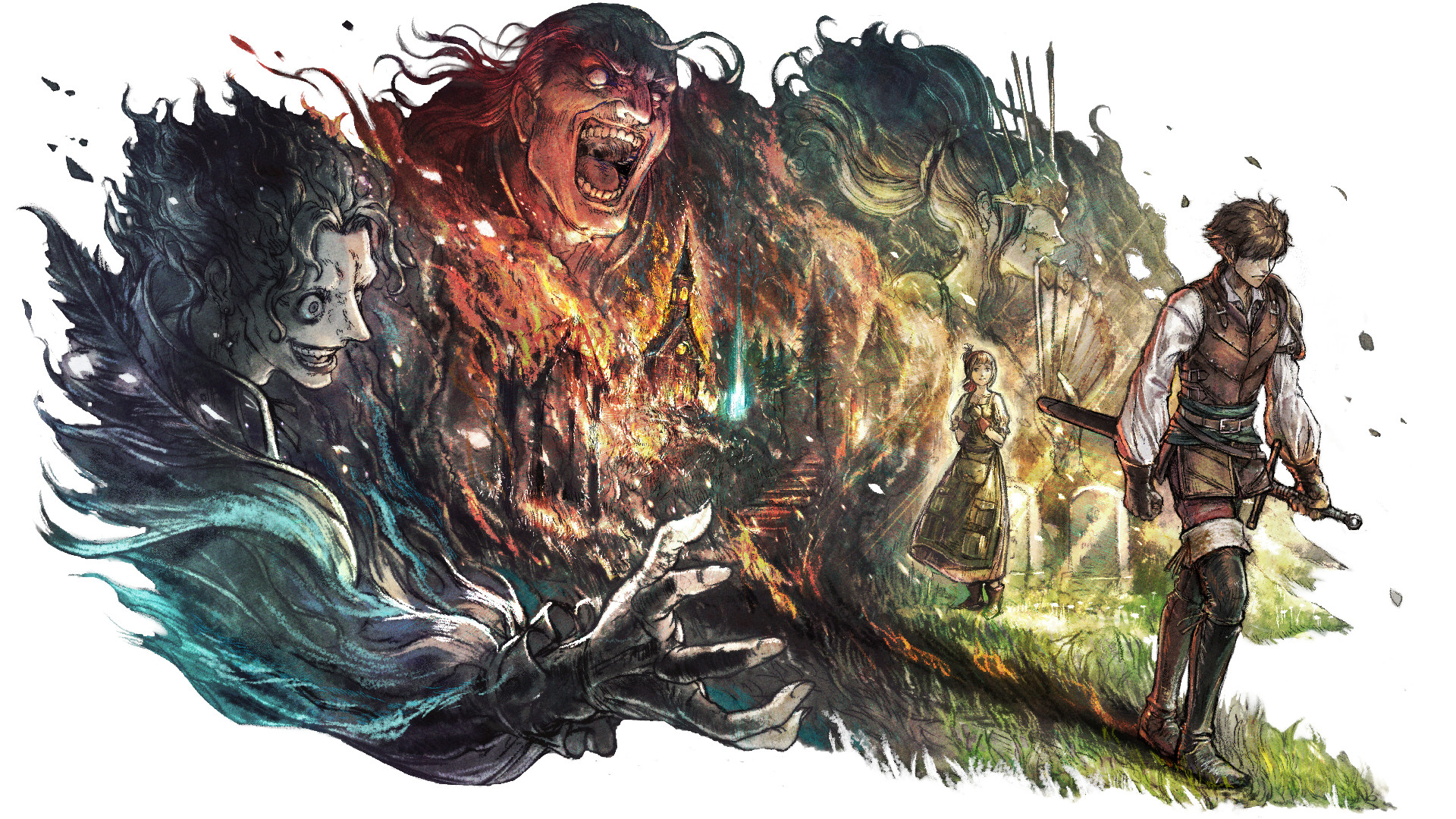45 interesting things we learned at GDC
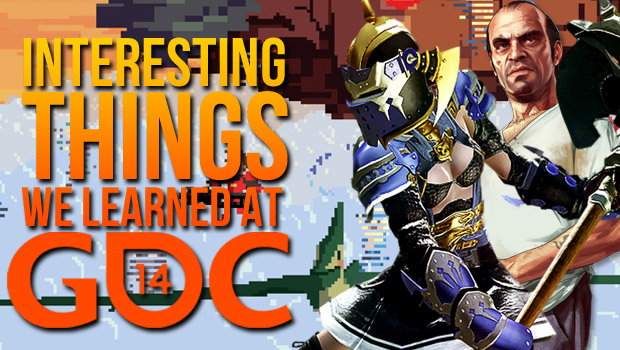
Let's talk
The Game Developer's Conference is unique. Unlike PAX, E3, and GamesCom, GDC exists so developers can talk to other developers. Though members of the press are scuttling about, the focus of the show is on the people who make the games we love, and their advice to others trying to do the same.
That means that, sometimes, they're a little more open about things, even if GamesRadar's writers are still within earshot. They'll talk about that feature they almost didn't add, or the ending that got cut. They'll talk about the future of stuff they're not really ready to talk about, or share a fun story about the inner workings of their games. This year was no different--we learned a ton by staying close to developers and listening to them speak, and came away with a number of interesting tidbits you might enjoy.

Sony came up with a name for its VR headset a week before its unveiling
Rumors had been swirling for quite some time that Sony was working on its very own virtual reality headset. And during a panel at this year's GDC, Shuhei Yoshida, president of Sony's Worldwide Studios, confirmed the worst-kept secret in the games industry by unveiling Project Morpheus.
While we're super excited for the device, we were surprised to learn that Sony gave the project an official name only a week before its announcement. And no, it's not named after that dude from The Matrix; Morpheus is the Greek God of dreams, which Sony felt was appropriate for a device that essentially transports you into a world that isn't real. Neat, eh?
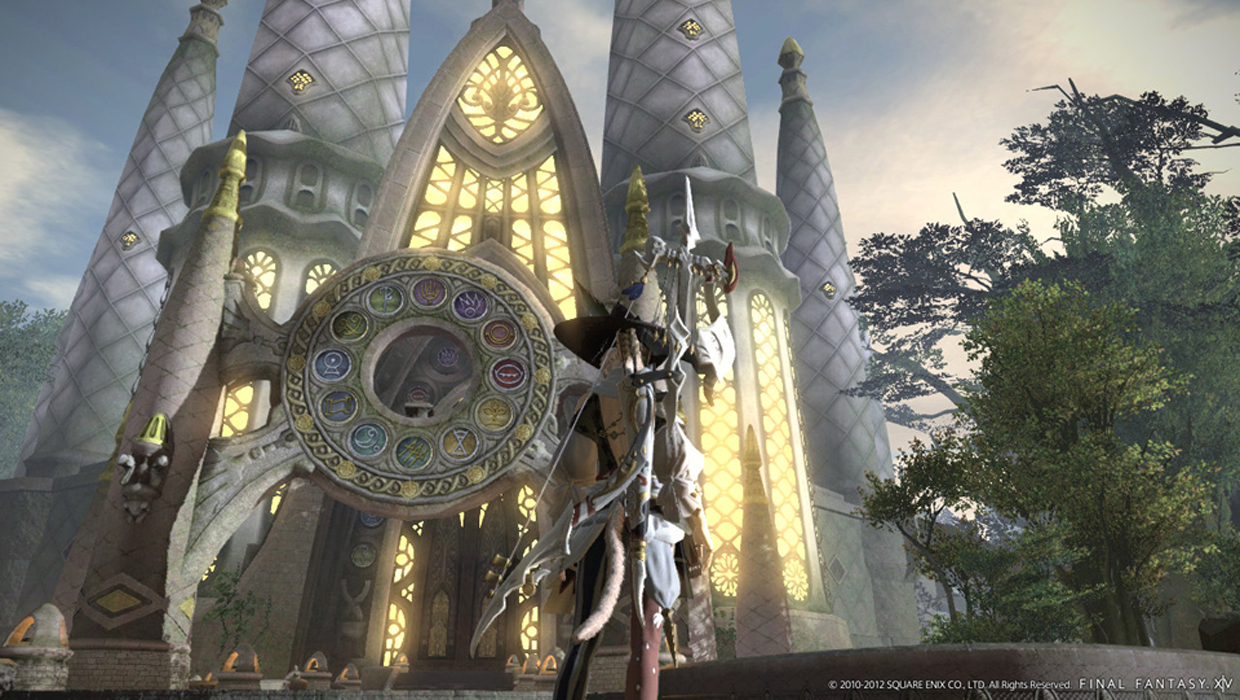
Developers of FFXIV: A Realm Reborn had half the dev cycle of a typical MMO to rebuild the game from scratch
What happens when you spend five years making an MMO, only for it to be labeled as a colossal failure at launch? In the case of the original version of Final Fantasy 14, the answer is: start over. When FF14 launched in 2010, it was met with heavy criticism from media and fans alike. Its systems were garbage, its servers were unstable, and even if you could look past these things, it was packed with more bugs than content.
Naoki Yoshida, who had been working on Square Enix's Dragon Quest franchise, was given the reins to the series. His goal? Fix it. There was just one caveat: he had less than three years to reshape his team and recreate the MMO from the ground up, a seemingly impossible feat (considering the average development cycle for an MMO is around five years). After many sleepless nights, he and his team launched Final Fantasy 14: A Realm Reborn, a fantastic MMO. Who would've thought it possible?
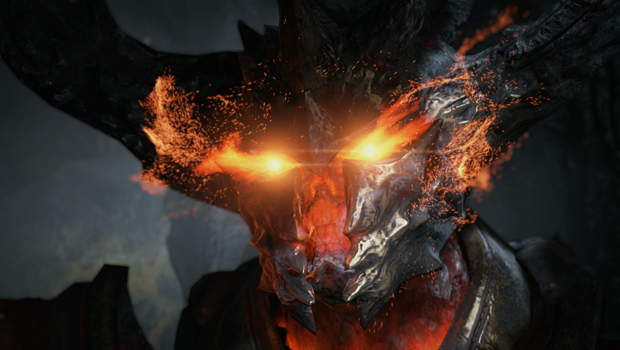
Epic isn't working on any game in the Unreal universe
Excited for the next Unreal Tournament game? Well, uh, you might want to sit down for this. At Epic's media briefing, someone in the audience asked if the developer was going to be making a new Unreal Tournament game, seeing as most releases of new Unreal Engines have been coupled with sequels to the developer's signature franchise. While we expected a typical "We're not talking about that" answer, Epic's Tim Sweeney decided to rip the Band-Aid right off.
Sweeney didn't just say they weren't working on an Unreal Tournament game--he confirmed that Epic flat-out isn't developing any game in in the Unreal universe. No Tournament, no vanilla Unreal, no Unreal-style anything. Nothing. The developer is working on a number of projects (including Fortnight--remember Fortnight?!), but none of them start with "Unreal," unless Sweeney was stone-cold lying to everyone.
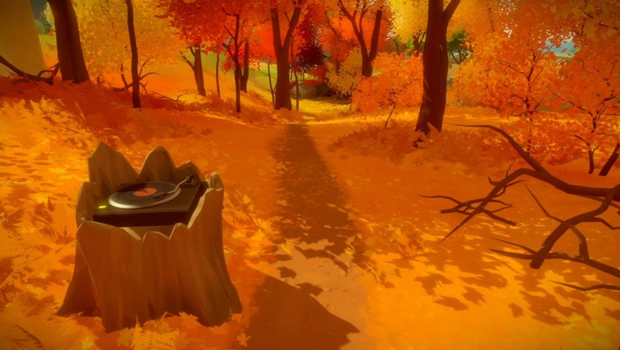
Developers of The Witness hired architects and landscape studios to bring the game's world to life
Few indie games coming in 2014 have us excited as The Witness, a 3D puzzle game conceived by Jonathan Blow, creator of 2008's Braid. During a panel that discussed The Witness' artistic approach, 3D artist Luis Antonio mentioned something quite unorthodox. In order to make the game's uninhabited island setting feel grounded in reality, a small team of architects and landscape studios were brought on board to ensure that the setting--and the structures inhabiting it--seem plausible in their design.
This is important, says Antonio, because the player is meant to explore an uninhabited island and uncover its mystery, all while feeling as though it's a place that could actually exist.
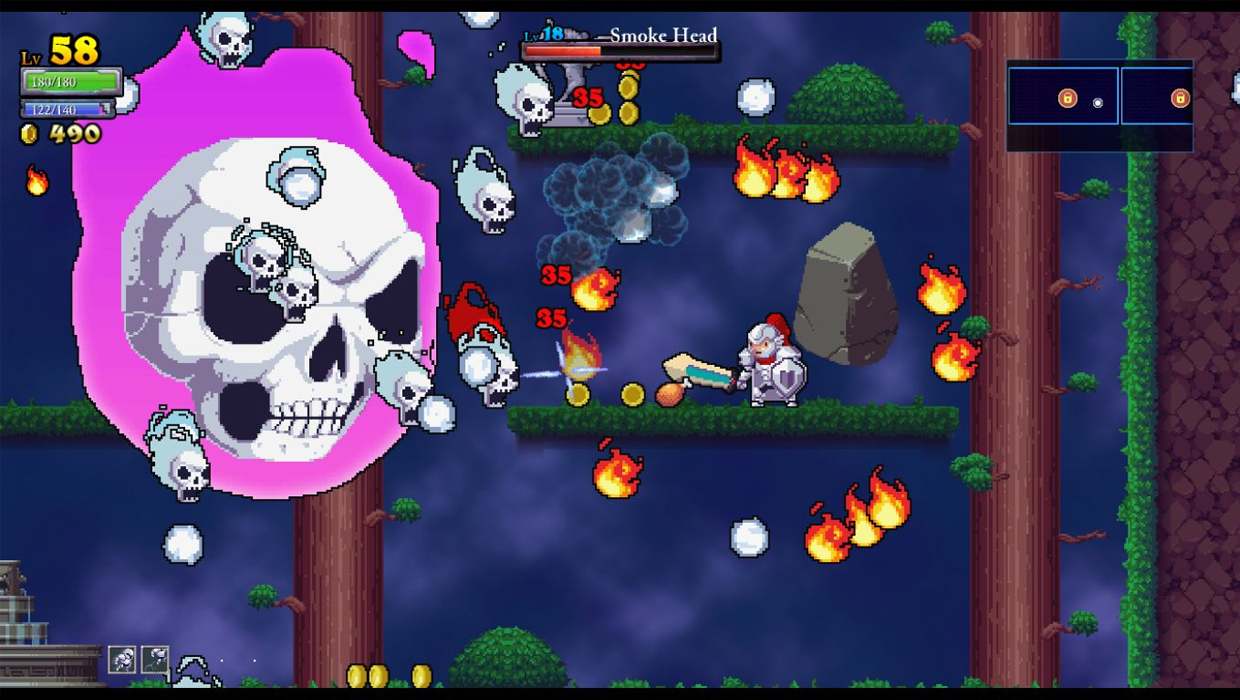
Rogue Legacy's developers made a profit on the roguelike after only one hour
Developer Cellar Door spent $14,878 making Rogue Legacy--which, compared to its previous releases (including "Don't Shit Your Pants"), was actually a lot of money. Thankfully, it didn't need to wait long to start seeing some returns. Within one hour, the game made all that money back, and then some.
After the first week was over, Cellar Door had sold 100,000 copies. Not too shabby, right? Especially considering it costs $15, a hair more than most other indie games on Steam. Even with Valve's cut of the profits, that's still one hell of a success story.
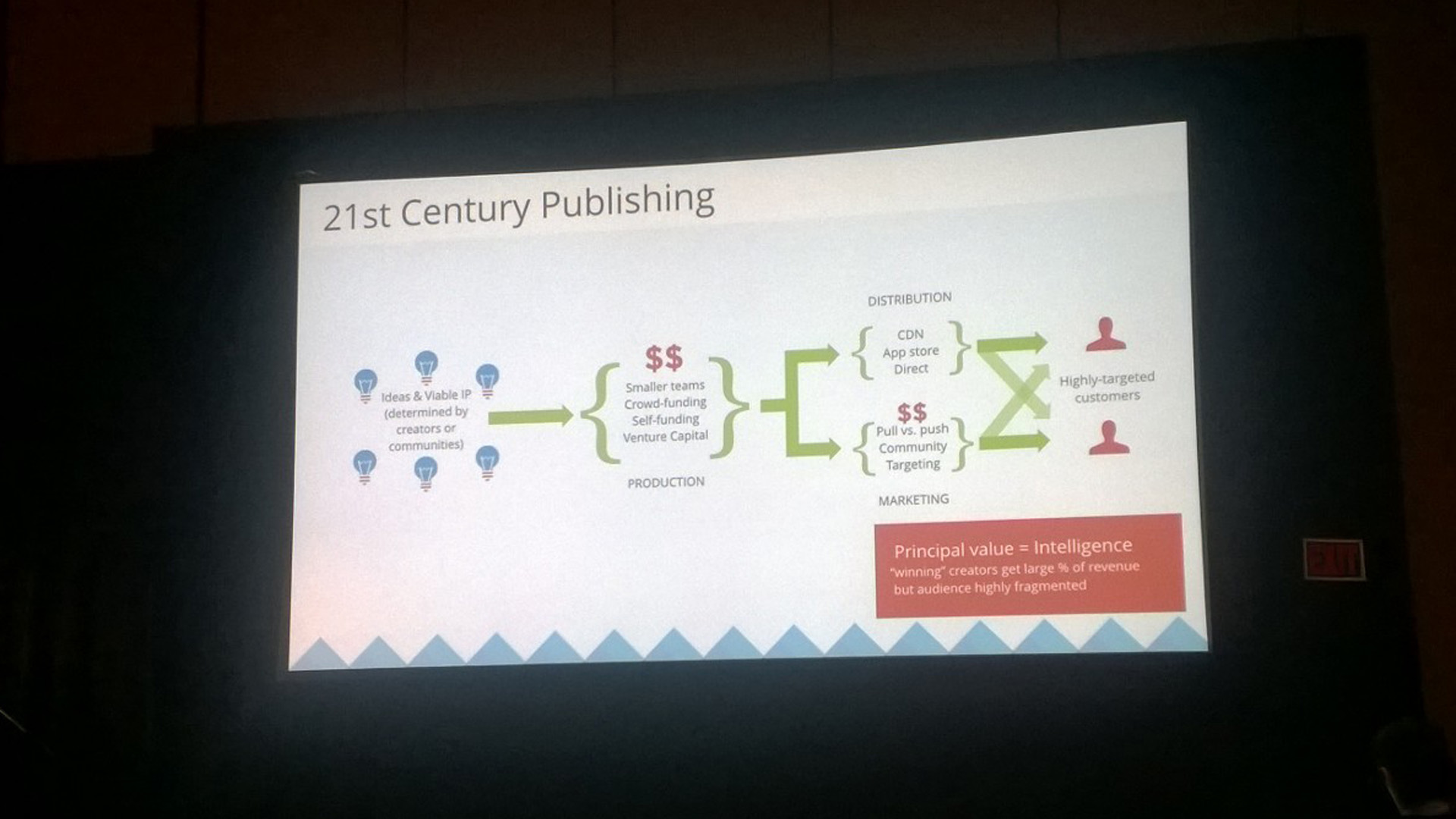
Here's how to make $1 billion
GDC staple Mitch Lasky, of venture capital firm Benchmark, delivered another illuminating talk at this year's show, this time tackling the role of the publisher in the 21st century. His talk, titled "Is Publishing Dead," took a look at how publishers approached their business in the 20th Century, and how all that changed in 2004, when World of Warcraft, Facebook, Stream, and Tencent all got off the ground.
All well and fascinating, but you're here for a $1 billion idea, and here's how you do it. Right now, according to Lasky, there are four major inefficiencies in the market--find a way to optimize any one of the following, and you're fucking rich. First, discovery (there are 2,000 new games published on iTunes a month). Second, customer acquisition (how do you get people to download your game?). Third, engagement (how do you inspire passion in your users?). And fourth, monetization (if free-to-play is the way, what percent of your audience is going to pay?)

Ken Levine's plan for narrative-driven, replayable games was (sort of) revealed
After over a decade of developing massive, AAA games, Ken Levine is ready for a change. He didn't want to keep building "bigger" and he didn't want to limit himself by linear gameplay. He wants to go further than games like The Witcher and Mass Effect, and has a plan.
Levine explained that his new concept involves trying to merge narrative storytelling and game systems. One part of his solution comes via "Macro Bars," which are basically individual like/dislike meters on a character-by-character basis. By giving a number of different "Stars" in the world Macro Bars, assigning them all individual likes and dislikes, and making them the important quest-givers, you're suddenly involved in a narrative web that can actually change depending on what they do. Help Orcs and you might piss off Frank, the Elf--but you might make Romeo (who is an Elf that likes Orcs) happy. And then the developer can change what their likes/dislikes are on additional playthroughs (maybe Romeo likes Dwarves this time), making for experiences that change every time, depending on what the player does.
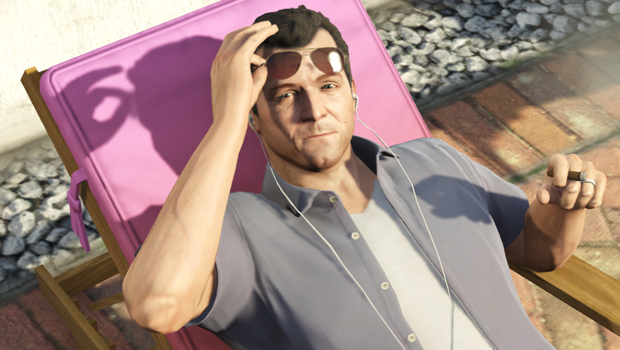
NPCs have three distinct bagel-eating animations in Grand Theft Auto 5
OK, there's more to it than that, but seriously--when was the last time you gave thought to the variations of NPC activities, let alone those that involve bagel consumption? As part of the "Simplest AI Trick in the Book" panel, Harmonix's Michael Dawe (who also did AI programming for GTA 5) revealed the trick to making canned NPC routines feel more believable: asynchronous animations.
Even if two onlookers are playing the same animation (for instance, munching a bagel during their coffee break), a subtle timing delay can make all the difference when it comes to the believability of the game world. Dawe explained that even something as slight as a 200 millisecond interval between animation playbacks can mask the fact that two bystanders are reacting to your gunfire in the exact same way. It's what makes the difference between you thinking "This looks so fake and dumb" and you not thinking about NPC animations at all.
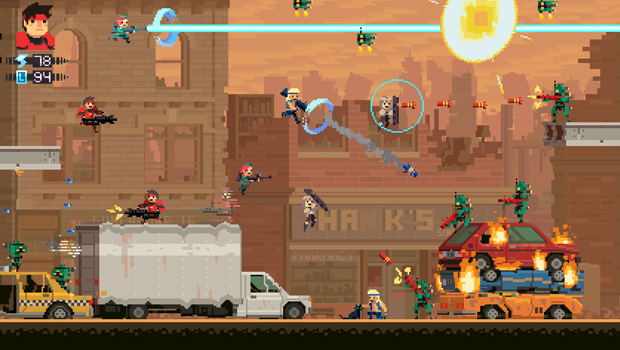
Quantum mechanics made Super Time Force a better game
Super Time Force's main hook is insanely awesome and awesomely insane: a 2D shooter that lets you rewind and replay segments in a parallel timeline, so your past selves can assist your present character in real time. And as Capy Games' technical director Kenneth Yeung explained, theories from quantum physics helped dictate the gameplay mechanics. It's pretty complicated stuff, but the payoff is a game that's simply more fun and intuitive, without getting bogged down by those pesky time paradoxes.
You know the bit about Schrodinger's cat, where the state of an object can only be determined when an observer is present? Same thing applies to Super Time Force: even though multiple timelines can be bouncing through a level, objects will only interact when a player can see them on-screen. There's also this theory called quantum entanglement which Yeung and co. turned into "entity entanglement," where events in character-specific timelines still happen even if you've made their cause-and-effect chain impossible in the present reality. "[We essentially disallow] anything that would mess up the previous versions of yourself," says Yeung. "Things may not make physical sense anymore, but the game feel more correct."
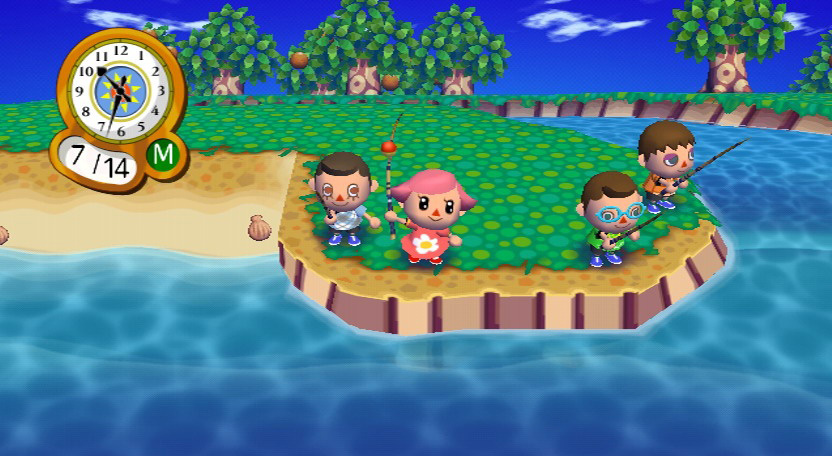
Nintendo admits Animal Crossing Wii wasn't great
Nintendo had an interesting panel covering last years sleeper hit, Animal Crossing: New Leaf. Lead game designer Aya Kyogoku, one of a number of prominent women speaking at GDC, spent most of the time detailing the work that went into refreshing the series and avoiding franchise fatigue. Part of that discussion dealt with an obvious fact, but one thats still surprising for Nintendo to address openly: Animal Crossing: City Folk for Wii wasnt very good.
Though she didnt trash City Folk by any means, Kyogoku said that the Wii games launch showed that not everyone was satisfied with the experience, and that franchise fatigue was setting in. Kyogoku compared the process to picking up a plants roots and planting them over and over again, all without making the changes to stop players from feeling isolated. This led the developers to refocus and redefine player communication on the 3DS release, and after selling more than 7 million copies of New Leaf worldwide, it would seem the plan worked.
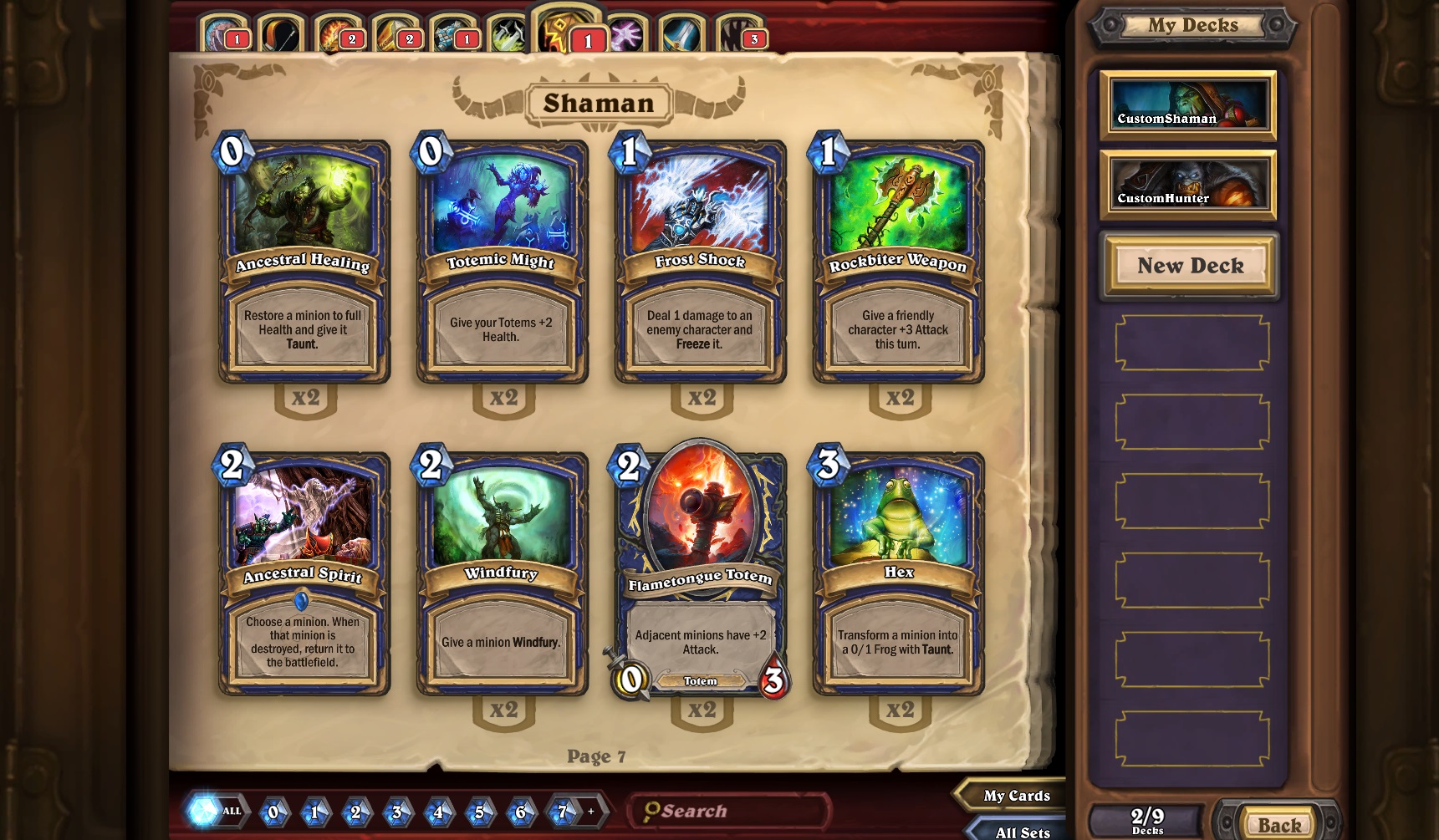
Emotional balance is as important as game balance in Hearthstone
Anyone who plays CCGs will tell you that playing against discard, counterspell, or resource-destruction decks is the antithesis of fun. And there's a reason you won't find any of those types of decks in Hearthstone: They were purposely excluded to avoid negative experiences for the player on the receiving end of the punishment. At his panel "Hearthstone: 10 Tidbits of Design Wisdom," lead designer Erid Dodds imparted the notion that "it's very important to be paying attention to the emotional state of the player."
The perfect example of this is the Mind Control card, which steals an enemy minion and turns it to your side. While the card itself was perfectly balanced, neither too powerful nor too weak, players were very vocal about how overpowered it felt when it was used on them, saying it was unbeatable. And so, even though it wasn't excessively strong, the team at Blizzard raised the resource cost of the card, dampening the strongly negative emotional response to having it played against you. Oh, and here's a fun tidbit--Hearthstone almost wasn't a card game. Potions, magical runes, and Star Wars-esque miniatures were all considered in place of cards, but in the end, cards as a medium are so much more self-explanatory for a CCG.
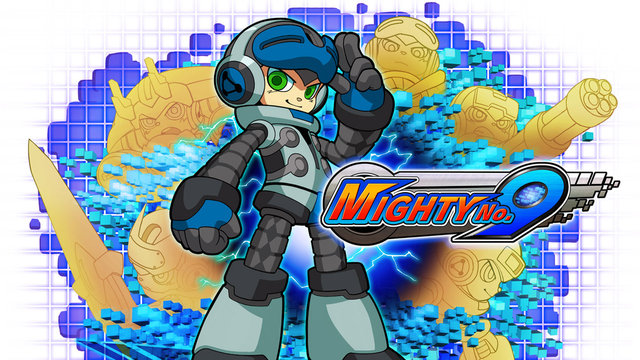
Keiji Inafune's art designs weren't the most popular for Mighty No. 9
Keiji Inafune has been one of the more quotable sources when discussing Japanese development, and the man famous for masterminding the Mega Man series made waves in 2013 by successfully Kickstarting a spiritual sequel, Mighty No. 9. When asked how the community input on this crowdfunded project compared to his canceled attempt at fan involvement with Mega Man Legends 3, Inafune and collaborator Mark MacDonald mentioned a humbling experience that happened with both campaigns.
Part of the fan interaction was letting them choose their favorite character designs to go in the game. With both Legends 3 and Mighty No. 9, Inafunes art lost out in the popular vote. That could be a bit embarrassing for a games director, but Inafune laughed it off and appreciated the small contingent of backers that kept his designs alive in fan art. Seems humility is one of the first lessons you learn when running a Kickstarter.
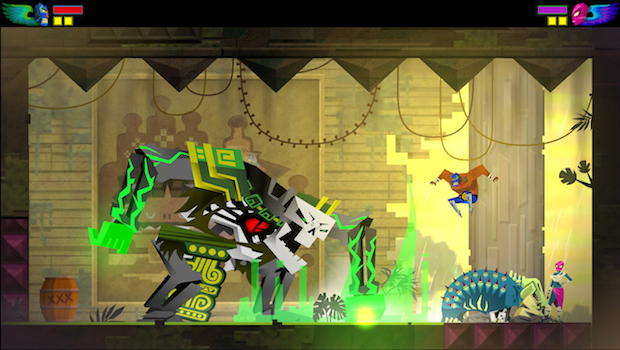
Guacamelee! was deemed seizure-inducing by Japan
If you've played the truly excellent Guacamelee!, then you might remember the epilepsy-triggering flash of colors that occurs every time you score a new ability or face a boss. And while we haven't seen any seizure outbreaks attributed to this stylish Metroidvania, Japan would rather be safe than sorry. While talking about Guacamelee! Super Turbo Championship Edition (the next-gen and 360 port of the game with new levels, bosses, and visual upgrades), Drinkbox Studios' Augusto Quijano and Chris McQuinn recalled learning to see things Japan's way.
For the Japanese localization (entitled Masked Warriors!), the strobing light effects had to be toned way down. "[There are rules like,] if it's this shade of red, it can't flash more than three times per second," said Quijano, who--being the team's concept artist and animator--had to make this change himself. "[I remember thinking,] 'What are they talking about? This looks so slow.' But then, after getting used to Japan's version, [seeing the original] version was like 'AAARGHHH! It's so harsh!'" laughed Quijano. We know what you're thinking, and yes: that one seizure-inducing episode of Pokmon is to blame for this regulation.
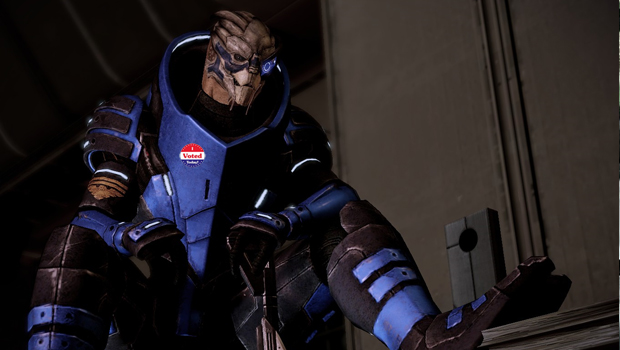
Square Enix and BioWare are unrivaled when it comes to sexy male characters
You always hear about the gratuitous depictions of women in games--but nobody seems to get as fervent about the sexualization of men. That's because there really aren't many desirable male characters in games, which writer and admitted Sephiroth fangirl Michelle Clough takes issue with. There's a big difference between sexualization, which Clough describes as someone "intentionally designed to evoke sexual or romantic interest," and objectification, when that sexuality is all there is to a character (as is so often the case with in-game females).
When it comes to designing attractive in-game dudes, Square Enix and BioWare have largely been leading the charge--Square with the Japanese Bishonen archetype of badass pretty boys, and BioWare with their diverse range of romanceable, emotionally vulnerable males. These kinds of characters send a message of inclusivity, as if the developers are telling straight women, gay men, and others that they're aware and appreciative of their presence in the audience. When game developers get away from the concept of the "male gaze," which assumes that the majority of players are all straight males, they can write better characters and tap into an even greater fanbase.
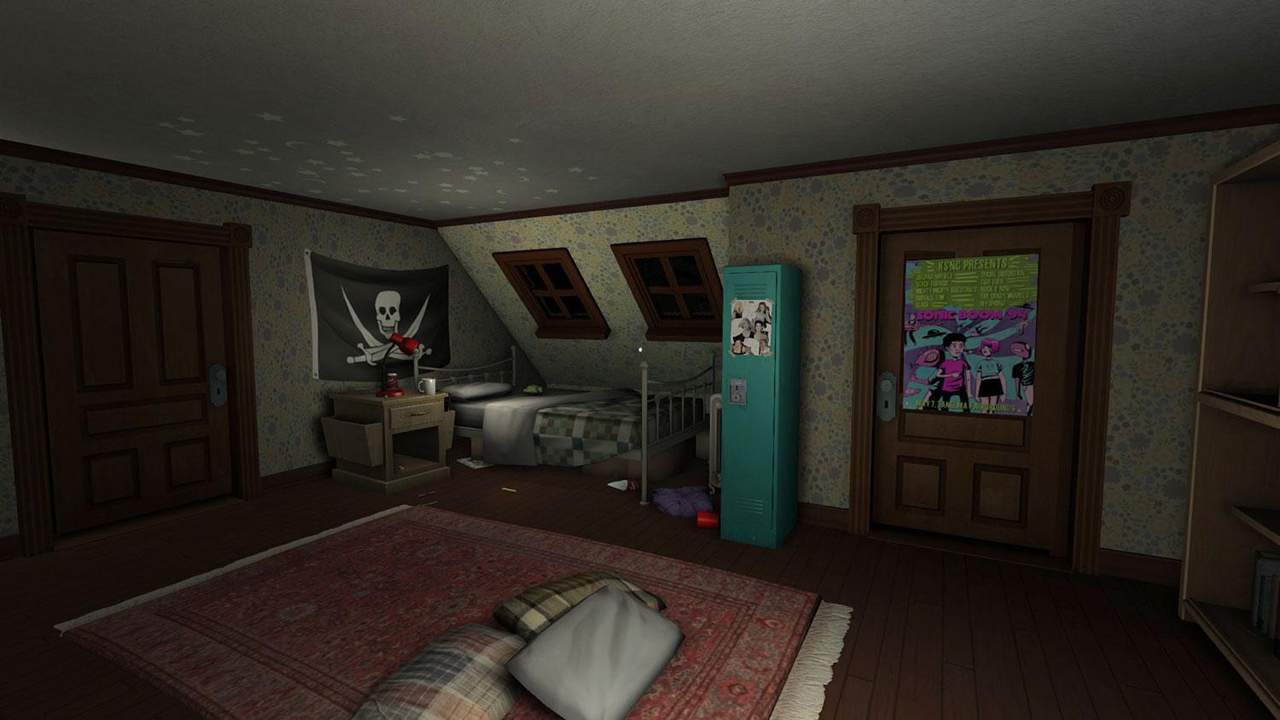
Gone Home is definitely a game, according to its designer
At first, the subtext of Gone Home writer and designer Steve Gaynors talk on his games place in the market--entitled Why is Gone Home a Game?--seemed to be answering the question of why Gone Home even exists. Sure, there are those who have asked that question time and again. But among enthusiasts, the general consensus seems to be that a video game is the perfect venue for Gone Homes environmental, contextual narrative.
Gaynor's lecture quickly evolved from justifying why Gone Home should exist as a game into what makes it a game, and not just a story. There are no hard lines for that distinction, but in Gaynors estimation, the strongest of Gone Homes game-specific attributes is the way it acknowledges and reacts to the player. Its not a multiplayer game, but things like the note you find chastising you for leaving every single light on in the house gives you the distinct sense that youre not alone in its world. And thats one of the defining traits of all games: a push-and-pull, a communal aspect.
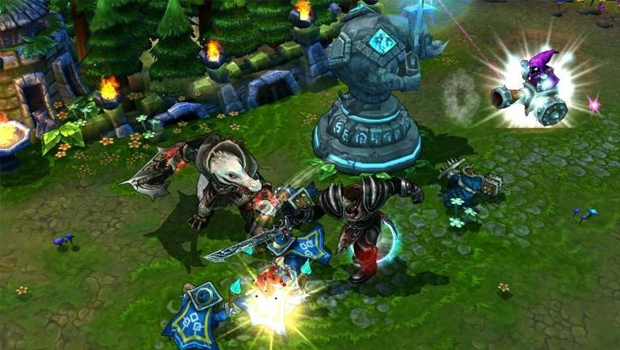
Riot is tracking crazy amounts of data to improve online sportsmanship
Theres perhaps no greater deterrent for getting into highly competitive games than the utterly hostile and caustic communities they can foster. It makes sense; people are greatly invested in these games, so its easy to get tense or frustrated. This problem is pronounced in most-popular-game-ever League of Legends--so Riot Games Lead Designer of Social Systems, Jeffrey Lin, gave a talk about how theyre trying to combat it, entitled Enhancing Sportsmanship in Online Games
In short, Riot tracks an insane amount of player data in order to produce optimal social environments. Linguistic analysis; wins and losses with specific heroes and how they correlate with Reports and Honors; how many times you play with friends--it's all used by Riot to facilitate the most positive player experience possible. Lin went over multiple methods the developers tried over the years and their success levels, but perhaps the most interesting was ensuring that if a team entering a match doesnt consist of five friends, then it will at least consist of one group of two, three, or four friends with the rest being strangers. Statistically, it's the most hospitable arrangement and the most likely to result in positive communication.
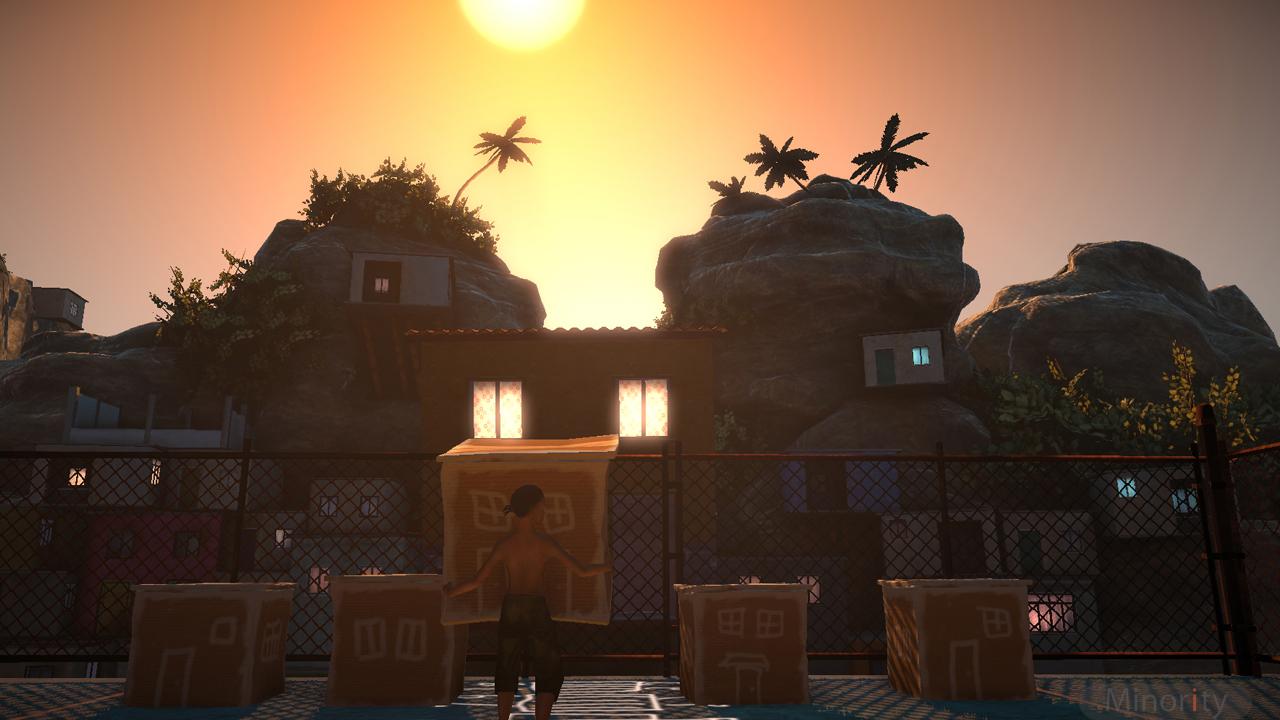
Vander Caballero says in games, fun doesnt have to come first
Papo & Yos divisiveness mirrored its own inconsistencies. Some championed the game for its emotional, courageous, nakedly personal narrative, while others decried its sloppy gameplay mechanics. In his talk entitled Empathetic Games are Here to Stay! Whats Next? creative director Vander Caballero copped to those mechanical flaws in his game, saying his studio didnt have the resources to build polished platforming gameplay.
But the point of his lecture was also to talk about the rise of games that arent fun in the conventional sense, and how forgoing fun can create a more compelling narrative. In fact, Caballeros leaning into that un-fun-ness with his next game Silent Enemy, in which the underlying theme is bullying. In it, the player-character will be clumsy, and will apparently fall down at random. Caballero also found time to announce a new game from his studio, called Cali, but not much is known about it beyond its premise: a personal love story from Caballeros past.
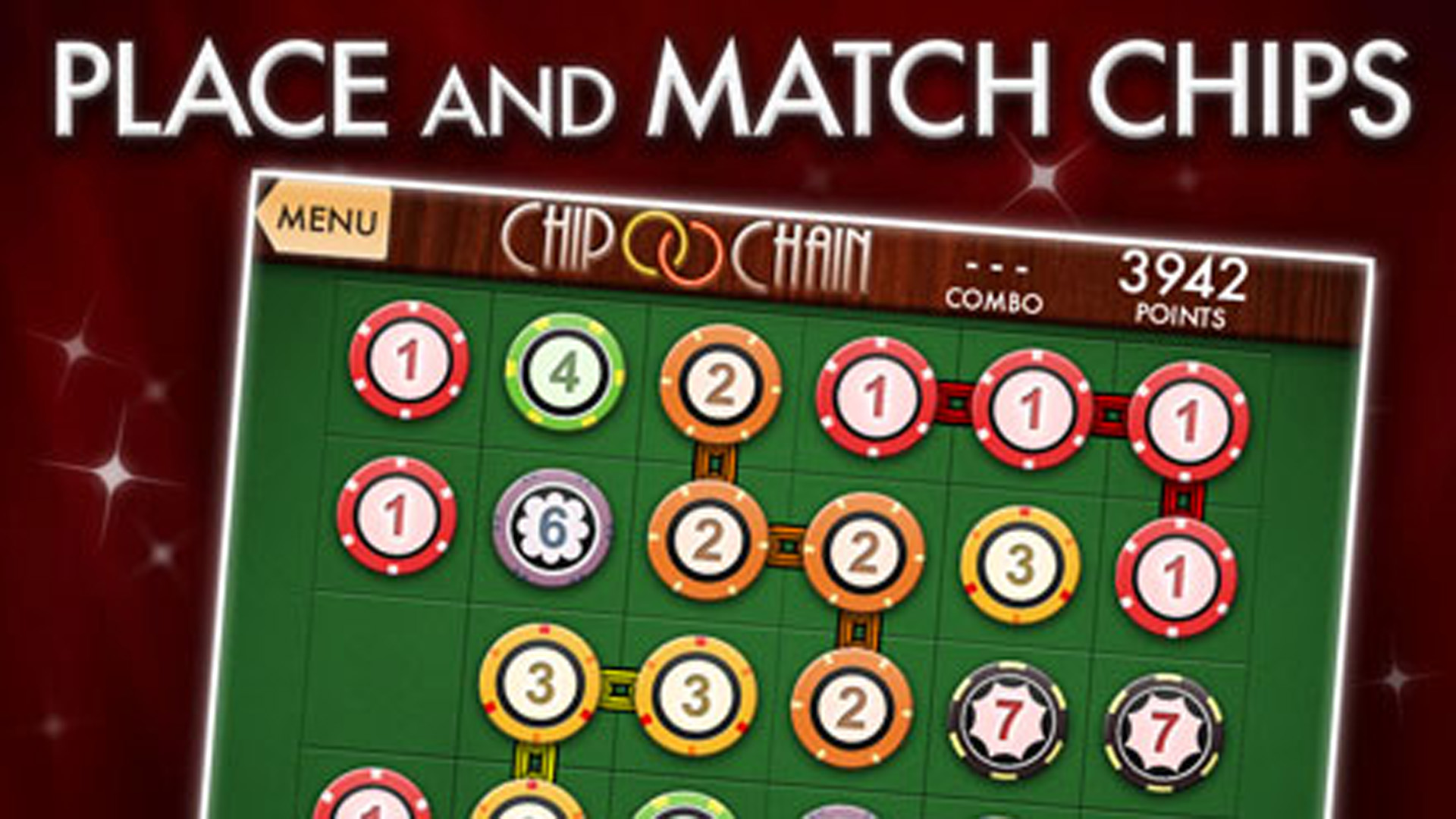
"Top selling" storefronts assure the rich get richer, and poor stay poor
During a panel about game discovery, indie developer Aaron Isaksen lamented the problems with the current strategy of promoting the "best-selling" games on platforms like Android, iOS, and Steam. While it might help people find things that are currently popular, they have another effect: creating momentum that can hurt anyone not already at the top.
While doing research on the subject, Isaksen said that he noticed that few people dug beyond the top few best-selling games in any given section. This meant that anyone not already there needed to rely on word of mouth--which, obviously, is easier said than done. The solution? Well, one option is localizing your game for other languages. Isaksen cited one developer that simply localized the title, description, and a few other sections of his game for other languages, and noticed that this helped boost his indie game in other markets, improving his sales by a huge amount for only a few days of work.
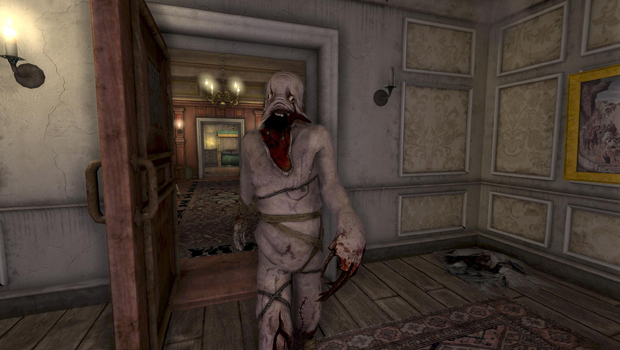
Getting gamers to think while they play is crucial to crafting a narrative
Frictional Games' Thomas Grip, whose credits include the Penumbra and Amnesia psychological horror games, approaches video game narratives with a unique method he calls "4 Layers." The core, foundational level of a game's story should be its gameplay, with your narrative goal and narrative background resting atop it. And at the highest level, there's "mental modelling," also known as "making shit up." (Grip's words, not ours.)
This mental modelling is most fascinating, because it involves the player filling in gaps in the game with their imagination as an intentional part of the design. "When you're playing chess," says Grip, "most of the time is spent thinking about your move. The actual interactions [with moving the pieces] is just a minor part of the gameplay experience--and I don't know anyone who would say chess doesn't have any sort of gameplay." Turns out, encouraging high-level thinking about the circumstances created by your game mechanics is just as important as the mechanics themselves.
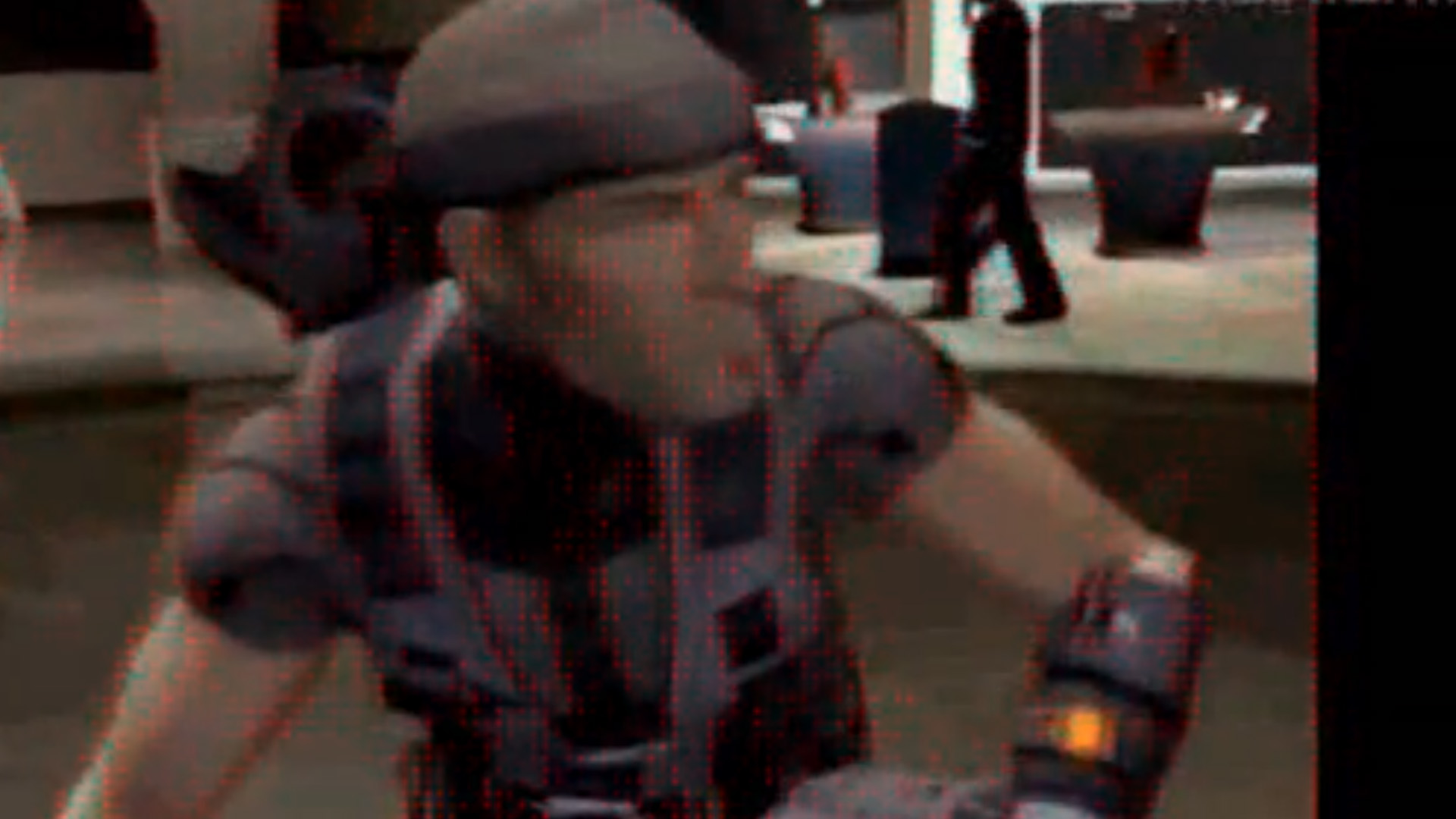
THQ tried to get one of its developers to copy Metal Gear Solid (and failed)
The developers who discussed this tried to remain vague, but the story beneath their cloudiness was super interesting: A decade or so ago, one of THQ's developers was working on a heist game, code-named "Underground." It was a fairly colorful game with a focus on stealing, but mid-development the release of a new Metal Gear Solid changed the focus. Corporate suddenly wanted to make the game more MGS-like, and that meant stripping away the personality. They asked (read: demanded) that the developers make the protagonist look more like Solid Snake, so they did, but it wasn't enough.
Eventually, someone from THQ went to the art director with a picture of Solid Snake wearing a helmet. That, apparently, was what they wanted (keep in mind, this was a heist game, so the helmet didn't really make sense). The developer followed orders and rebuilt a demo of the game with this new hero, but it wasn't working out--this new direction didn't fit. When the art director was off on his honeymoon, THQ scrapped the game.
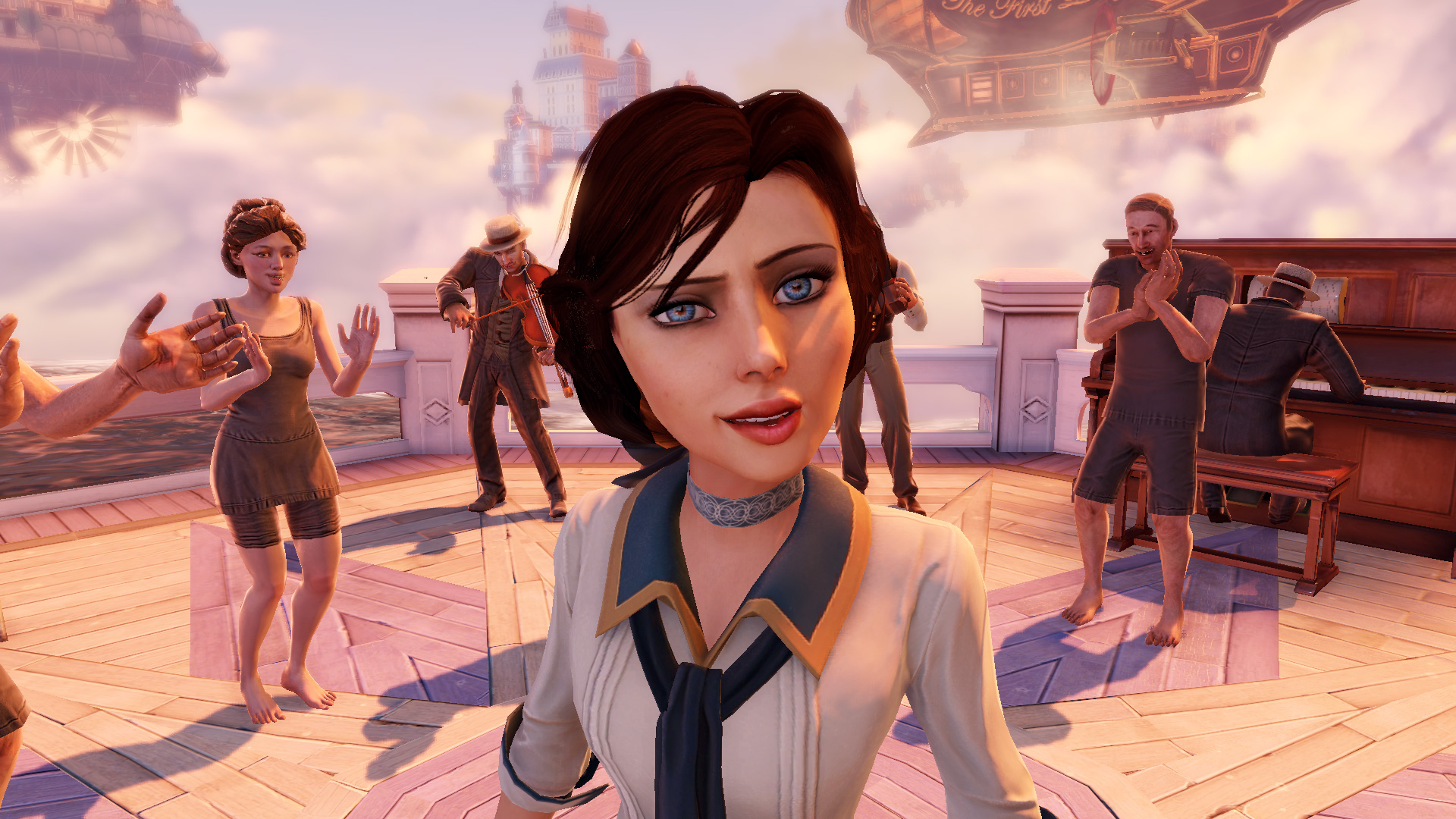
Irrational Games created a "Liz Squad" to make BioShock Infinite's Elizabeth a more human character
How difficult could it possibly be to make an AI companion seem like a human character instead of an emotionless robot that just follows you around? According to Shawn Robertson, the animation director at Irrational Games, it's really damn hard. Consider this: Even the worst actors on direct-to-DVD movies can avoid collision detection flawlessly. They might not provide convincing performances, but their humanity--and all the basic things that entails--is a given. Computer programs? Not so much.
In order to make BioShock Infinite's Elizabeth a convincing companion, Irrational Games formed a 13-person team dubbed the Liz Squad. Their goal: to develop a series of systems that would convey emotion and allow her to react to the world in a realistic way. Said systems included a library of animations and gestures that could be triggered whenever she encountered something in the world, be it a dead body or a pretty flower. All of these things, including her blinking frequency and facial expressions, took an insane amount of time to get right. We're just glad they pulled it off--kudos, Liz Squad!
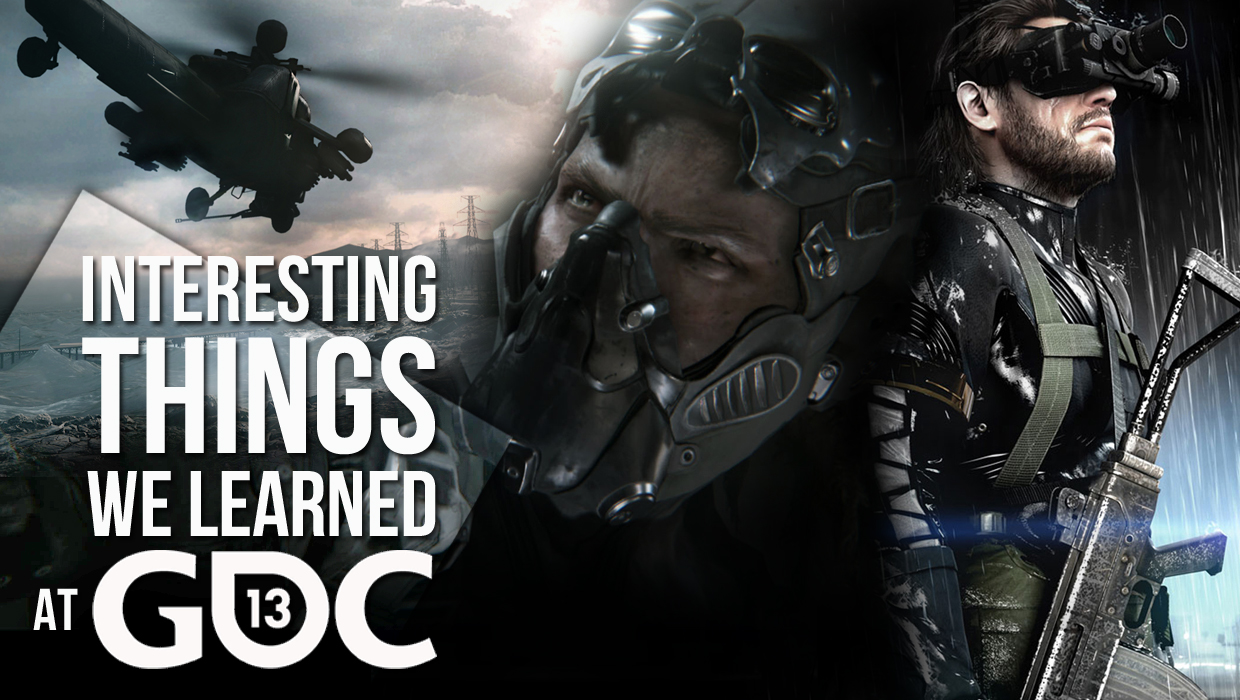
Let's talk 2013
Want more? You're in luck! We also have an additional two-dozen factoids from 2013's GDC. Like... did you know that the best feature of your favorite game was added by accident? Or that your favorite character was almost cut at the last minute? Odds are, it's true. At the 2013 Game Developer's Conference, devs opened up about their games, talking about the things they learned in hopes of inspiring other game developers.
And in doing so, many revealed interesting things about their games, or about their view of games in general. So put on your thinking hat and prepare to take a 24 peeks behind 24 curtains, as we share the most interesting things we learned at GDC.
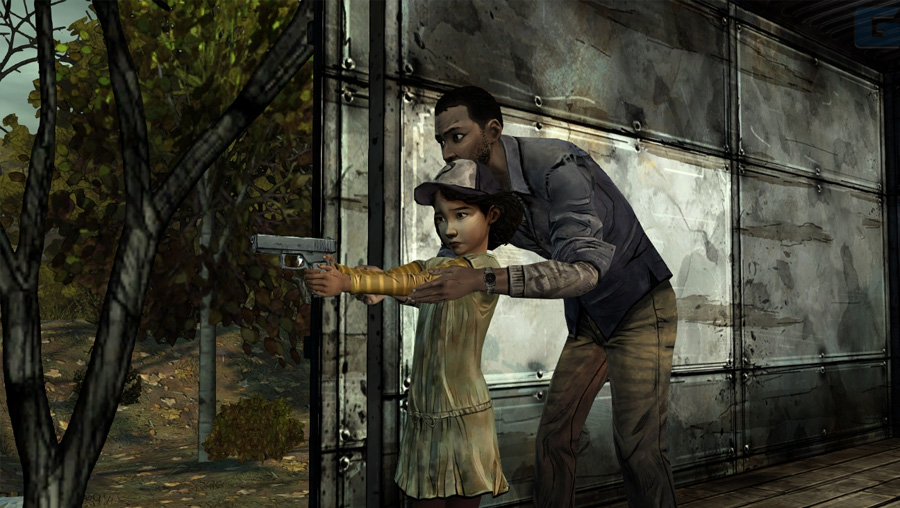
Clementine was almost cut from The Walking Dead
No joke--that would've been disastrous. But while talking about the game, Sean Vanaman and Jake Rodkin, two of the game's designers, made a good point: They didn't want to write a childish character that you'd feel stuck with, and thus almost cut Clementine entirely.
Her initial purpose was to give you a reason to not want to just abandon the other characters you'd encounter through a playthrough. In the end, she became one of the most compelling reasons for playing the game.
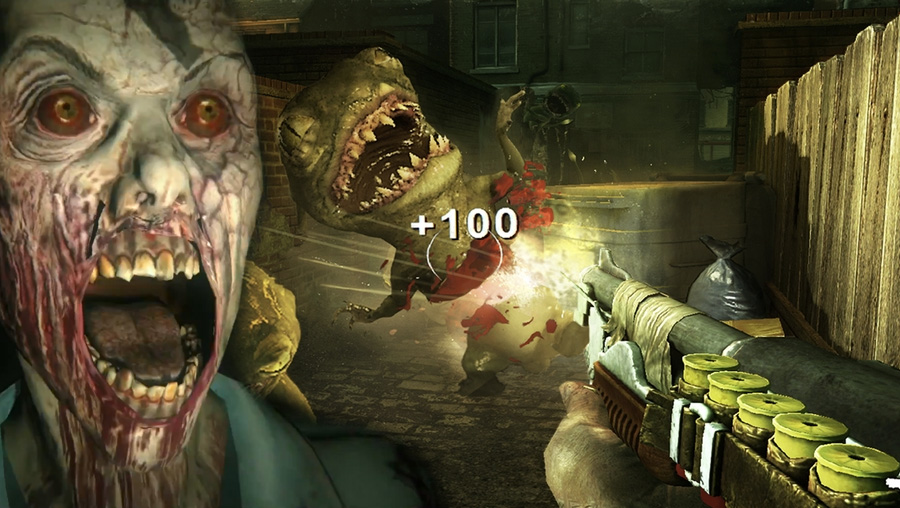
Killer Freaks freaks became zombies because they were too small
Weve written before about how Killer Freaks from Outer Space became ZombiU, but we found out more about the rapid transition from alien to undead at the ZombiU postmortem. After the game was shown off at E3 2011, Ubisoft knew it had to change it, but the reasons werent only because of the cold reception. Apparently, an even bigger reason was because the titular freaks were too small.
Ubisoft wanted to show off the power of the new system. It wanted to demonstrate what made the Wii U different, and it simply couldnt do that. It wasnt a good use of the hardware to see small green blurs darting around, so it decided to go the opposite direction, changing the small, fast enemies to big, slow, brain-hungry ones.
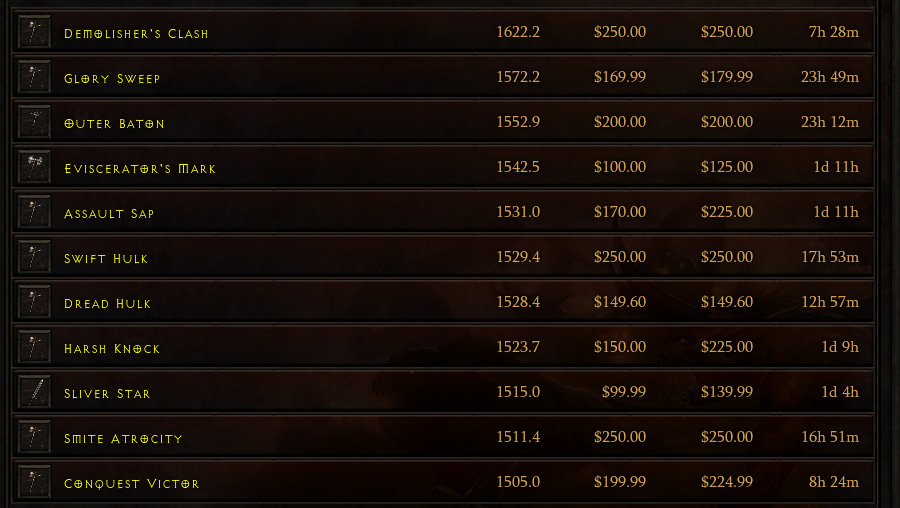
Ex-Diablo III director admits that the auction house hurt the game
In our Diablo III review, we complained that the inclusion of an auction house diminished the importance of loot, thus damaging the game's infastructure. Turns out Jay Wilson, former Diablo III game director, agrees. During his panel at GDC (reported on by Joystiq), Wilson said that the auction house "really hurt the game."
So, why include it at all? Turns out Blizzard assumed that the Auction Houses would prevent fraud, and that only a small percentage of players would use it. This would keep prices in check, and help maintain item value. But... that didn't happen. The way the game was balanced meant everyone could just buy whatever they needed. And they did. Nearly all of the game's players used the auction house, damaging the economy and--in turn--the game itself.

Warren Spector is tired of rolling dice
Deus Ex developer Warren Spector isnt a fan of die-rolls in video games. Though he admits that they were important to early gaming (which were essentially recreations of Dungeons & Dragons and other die-based games), he thinks the time has passed. During his GDC panel, he talked about how many current-gen games still use die-rolls (usually behind the scenes) to decide the outcome of events. And he thinks thats nuts.
Why use dice? he asked the crowd. We can simulate the difference between a small sword and a big sword hitting a door. We can use physics to see how it would effect it, we can simulate shotguns. Why use dice? Its ridiculous.
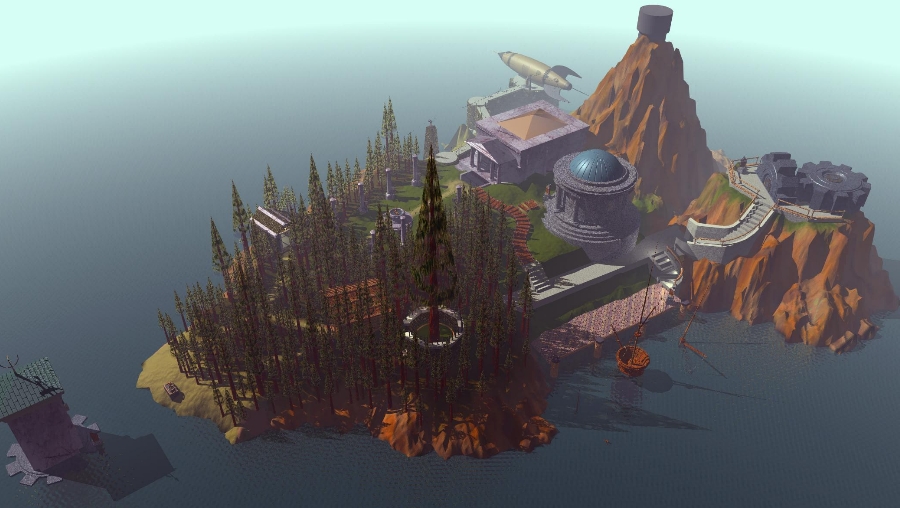
Myst was play-tested D&D style
While describing what influenced the creation of Myst, Robyn Miller recollected his early experiences with Dungeons and Dragons, when he and his brother Rand were enchanted by the game's ability to tap into the freedom of the mind. "When there's a really good dungeon master, a great story can happen," said Miller. "Rand created his own dungeon...and what he threw out was rolling to create your characters. He said 'OK, you guys are gonna play this, and you're just going to be yourselves.' In fact, he never used dice at all--he just told people what they saw in that universe."
That fostering of the imagination would come in handy later down the line, when the layout for the Myst islands was first being prototyped. "We play-tested Myst in a D&D fashion...and we found issues with the game [purely through the description of the environment]," said Miller. "It really worked incredibly well." Funnily enough, Rand's drawings of his childhood dungeon would eventually become part of the landscape in the game's finale, the Mechanical Age.
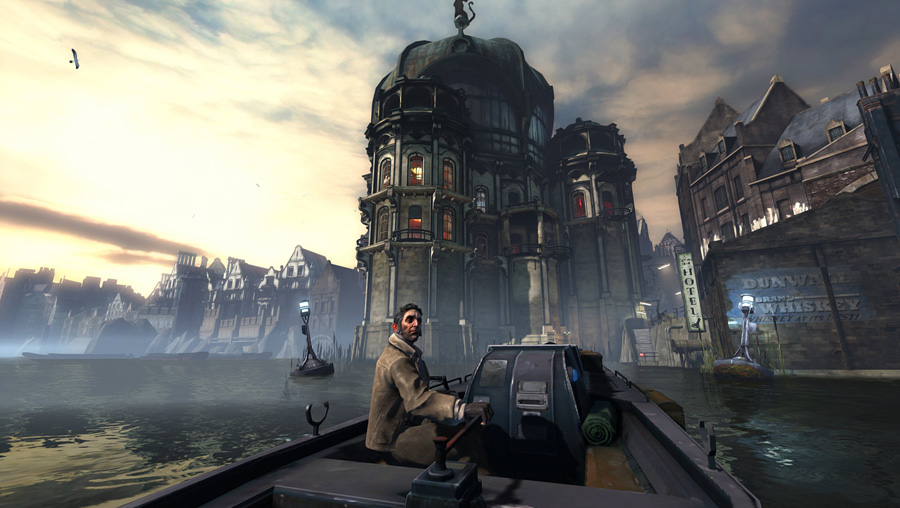
Dishonored was going to take place in medieval Japan
If the level design team at Arkane Studios had gone with their original concept, Dunwall would've had exponentially more pagodas and sliding shoji doors. Sebastien Mitton, art director for Dishonored, said that "The origin of the project was set in medieval Japan, with the same setting [and mechanics]." That may sound strange, but we bet The Outsider gets around across huge expanses of space and time; who's to say he couldn't bestow an ancient yojimbo with the same supernatural powers that Corvo had?
"But we thought that [Japan] would not be a good thing for us, because we don't know this culture [as well as we know European culture]," said Mitton. The Far East setting was ditched in favor of 1666 London, which later evolved into Dunwall, the sci-fi-meets-old-timey city which we now know and love. Even though Dunwall is no longer a direct interpretation of London, much of the architecture and aesthetic themes in the levels were inspired by visual studies of London, England and Edinburgh, Scotland.
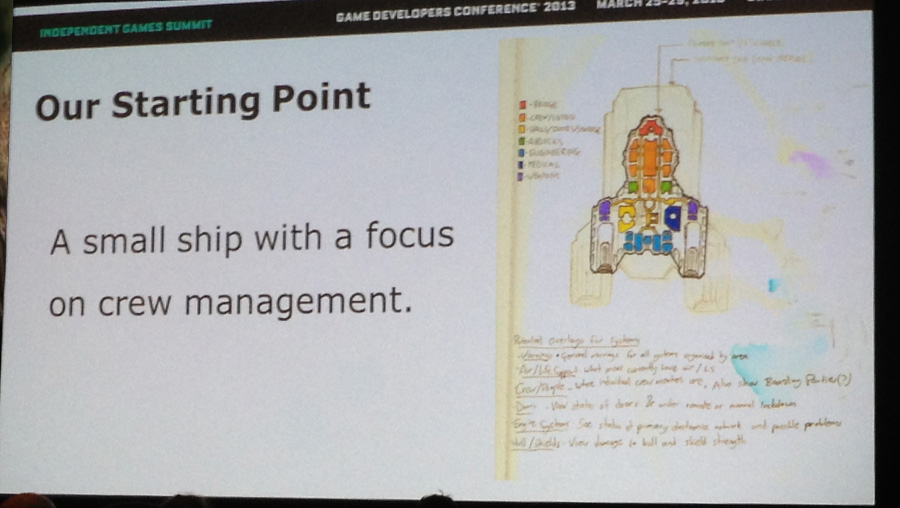
FTL released with placeholder animations and graphics because no one cared
During the FTL postmortem, the developers discussed the process of making the game, talking about how much the space-based adventure changed from its conception to release. Originally, the only goal was survival, and everything was more complicated. You used to be able to overclock your tools, there were positional shields, and youd be able to zoom out during combat. Eventually it became focused (as you can see in the image above), but there was a time where it was anything but.
And while it was interesting to find out about the special encounters and monsters that got cut, the most surprising thing was how much temporary content made it into the game. The backgrounds, planets, and jumping animation was supposed to be placeholder stuff that would be replaced later. But no one ever mentioned it. Theyd planned on changing it up, but since no one said anything, it just left it in.

The Fox Engine was good enough to fool a Konami employee
For many people, the Metal Gear Solid 5 reveal was the biggest news to come out of GDC. After Hideo Kojima had finished displaying his new game, he let other members of his studio take the mic. The teams descriptions were certainly on the technical side, but they showcased the power of MGS5s dev tool, the Fox Engine, with some images that even the layman could marvel at.
The best example of Foxs ability to create realistic rooms with lifelike lighting was a recreation of the conference room in Kojimas office. Side by side they looked nearly identical, so much so that the devs said a Konami employee thought that footage was coming from a secret surveillance camera. We hope they caught on once Snakes character model started sneaking around the screen.
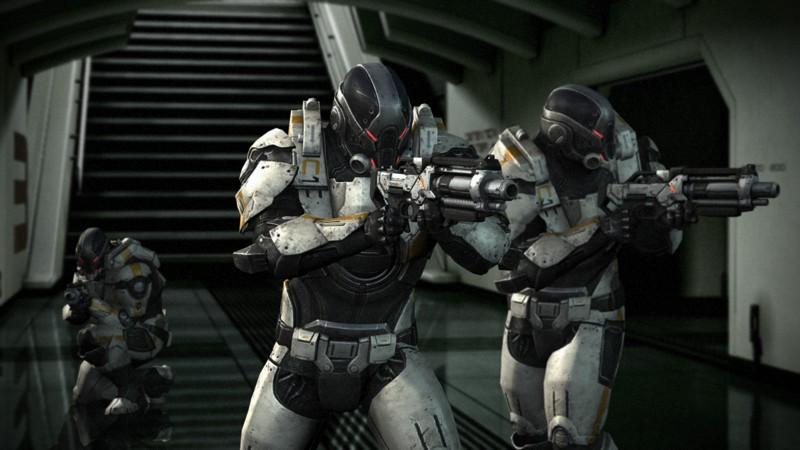
Enemy types were essential to the storytelling in Mass Effect 3
BioWare recognizes that video game enemies do more than just give you something to shoot at--they can have a huge impact on the pacing and emotional impact of a given scenario. While walking through the design process of Mass Effect 3's Genophage Cure mission, senior designer Dave Feltham emphasized that each section of the level had a "desired intensity level," which would be supported by the type of enemy you faced.
"We can actually use the combat to express some of the themes [of the mission]," said Feltham. For instance, mowing your way through waves of Husks imbues the player with a sense of confidence, while Brutes make the player feel caught in vicious chaos. "Originally, we actually had a Banshee planned into the mission," said Feltham. "But we realized that it would actually work against the themes and emotions that we needed. Because Banshees are incredibly hard to fight, [and] one of the themes that we had in the mission was urgency--we had to get to Wrex. The Banshee was going to make us stay in one area for a longer time, so we ended up cutting it." Contrast this with the Catacombs, a stretch of the mission with no combat whatsoever so you can appreciate the environmental storytelling of the ancient Krogan ruins.
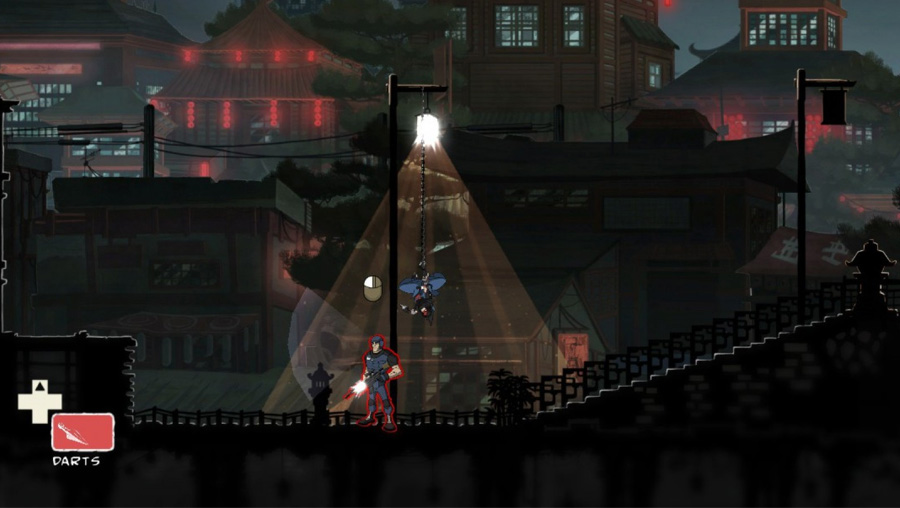
Mark of the Ninja almost wasn't a stealth game
Many consider the downloadable Mark of the Ninja to be a shining paragon of the stealth genre, letting you sneak in the shadows and silently eliminate or bypass your foes with the precise execution befitting of a shuriken-packing assassin. But there was a time early on in the game's development when the stealth felt so unsatisfying that it almost became the secondary focus in a primarily action-based platformer. Jamie Cheng, founder of Klei Entertainment, recalled that "none of [the mechanics were] working...it felt all mushy, and just sucked. It got so bad that...we actually thought 'This isn't actually going to work at all; we can't build a stealth game.'"
Luckily, the team went back to the drawing board, narrowing their focus to the idea that stealth is all about higher-level planning and execution. "Once that was clear...the game started designing itself," Cheng said. And thank goodness--we'd take Ninja's unique stealth over yet another 2D hack-'n'-slash any day.
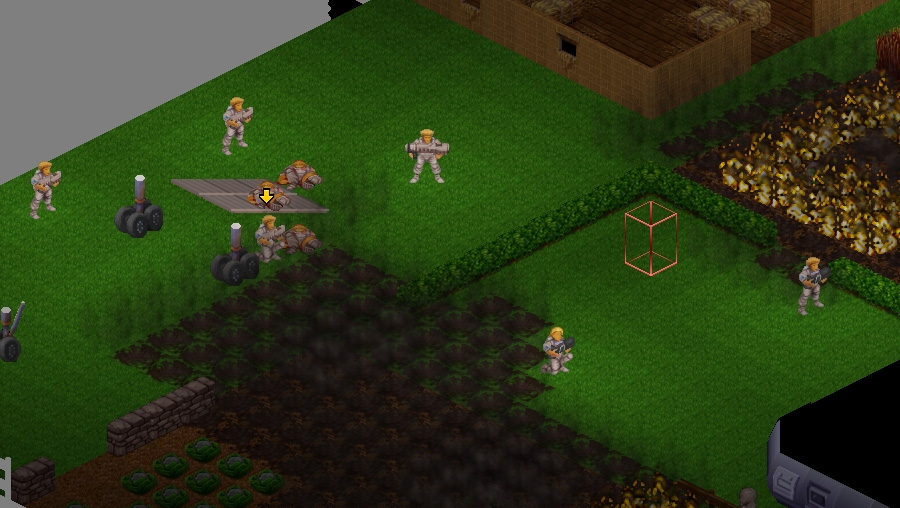
X-COM was heavily inspired by board games
It shouldn't come as a huge surprise that Julian Gollop, the director of the legendary PC strategy game X-COM: UFO Defense, was and still is a diehard board game enthusiast. In his projects leading up to X-COM--turn-based tactical games like Rebelstar and Laser Squad--the strategy and planning inherent in board games had a huge impact on Gollop. Chief among these were Sniper!, a hex-grid World War II game, Traveller, a book-and-board RPG, and Freedom in the Galaxy, a complex sci-fi epic in tabletop form.
In fact, Gollop is still an avid board gamer, and their influence on his work persists to this day. For instance, when he was developing his most recent game, Tom Clancy's Ghost Recon: Shadow Wars on the 3DS, Gollop tested out his designs using a pencil-and-paper board game prototype. Why waste time programming a mechanic that you'll eventually scrap, when a tabletop experience can illustrate any potential problems right away?
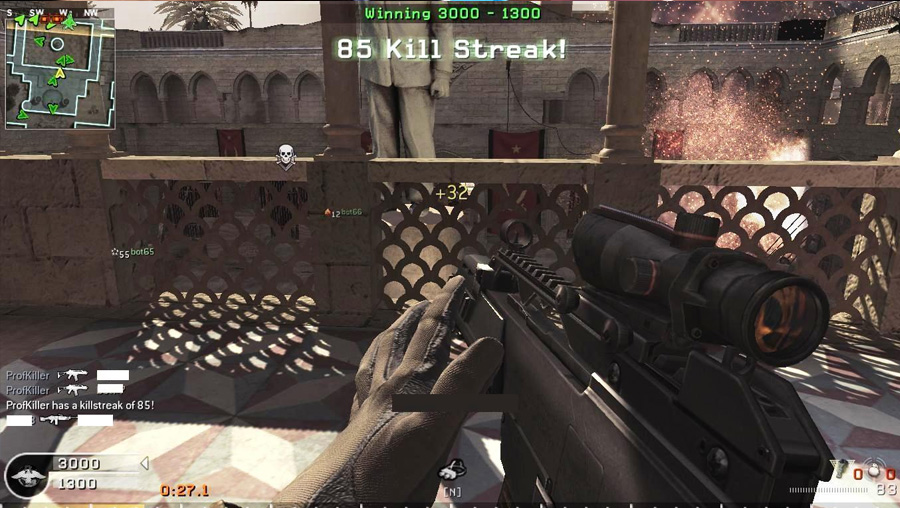
Competence is a powerful motivator
There are things we do in video games that are at once immensely gratifying and then again unduly deviant. For instance, think back to the last time you were cruising through Call of Duty, on the kill streak of your life, and you rounded a corner, saw an enemy, and replaced his face with a fine pink mist. Pretty awesome, right? No! That's abhorrent! What the hell's the matter with you?
OK, OK, so here's the good news: You're probably not a sociopath. See, as discussed by Scott Rigby and Troy Skinner in their panel titled "The Applied Value of Player Psychology: Putting Motivational Principles to Work" in the context of games, your brain and emotions are responding to the principle of competence. That shot? It was amazing! You're really good at this game! Now, go tell your friends how amazing you are so they'll buy a copy too!
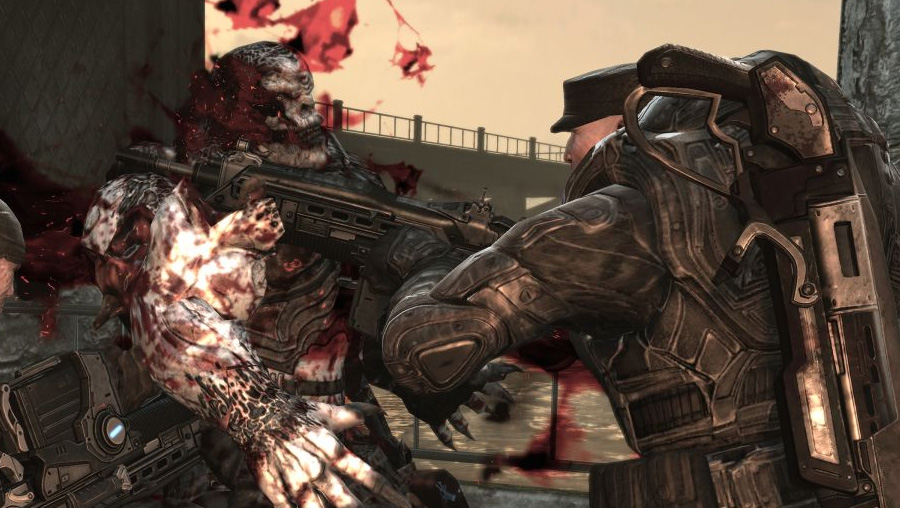
The Gears of War team uses Achievements to find hackers
At the previously mentioned Achievement-focused panel, another of the guests was Rod Ferguson. He just finished his work on BioShock Infinite, but before joining that team he was one of the top guys working on Gears of War, particularly the Achievements. He said he preferred using Achievements as cheese to guide players through a maze, in particular to introduce them to modes and features they wouldnt try otherwise. But he also mentioned it was a great way to exercise the old ban hammer on cheaters.
Ferguson told the story of the Gears team being perplexed when they saw thousands of players unlock a certain Achievement two days after launch. The unnamed challenge could only be completed over the course of more than a year, not 48 hours, so it was obvious these guys had hacked their 360 to unlock all the Achievements. Instead of being bothered, Rod was happy to see this happen; it made it clear exactly who to boot from the game.

Humanity's last game is buried in Nevada
Somewhere, right now, in the Nevada desert, there lies buried a game designed by Jason Rohrer that no living person is meant to play, or has ever played. It was designed by him and playtested using rudimentary AI processes, and then engraved on durable high-quality titanium.
Following his winning Game Design Challenge presentation at GDC, in which he competed against the likes of Will Wright, Richard Lemarchand, and Harvey Smith, Rohrer disseminated hundreds of pieces of paper, each containing hundreds of coordinate locations. Of over one million possibilities, only one leads to the correct spot--and thats trusting everyone in the room preserves their slip of paper. Not even he knows the exact location. If one person checks one code everyday, taking a metal detector out to 16-digit coordinate locations, it will take, with the worst of luck, more than 2700 years to find the game. It very well may be humanity's last game.
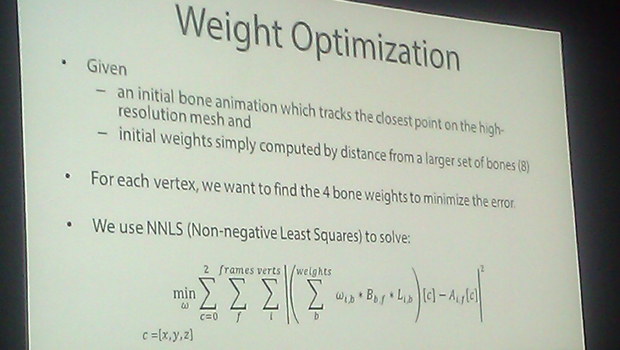
Next-gen graphics are... hard
The above image is pretty awful. It's grainy, you can barely see what's going on. Even if you could see it clearly, most of the words don't make sense on their own, let alone in the context of one another. Take it as a metaphor: There are things about video game development that you arent going to understand in a million years.
Such was the takeaway from the Next-Gen Character Rendering panel that Activision Blizzard researchers Jorge Jimenez and Javier von der Pahlen held on Wednesday afternoon. Hell, the panel's synopsis scarcely makes sense: "efforts toward photorealistic character rendering are futile if they don't include subsurface scattering rendering (SSS), realistic eye shading, physically based rendering, depth of field, film grain, plausible bloom, film-like tone mapping, very detailed assets, soft shadows, and an accurate anti-aliasing solution."
Suffice it to say, next-gen games will look purty. Don't ask how or why.
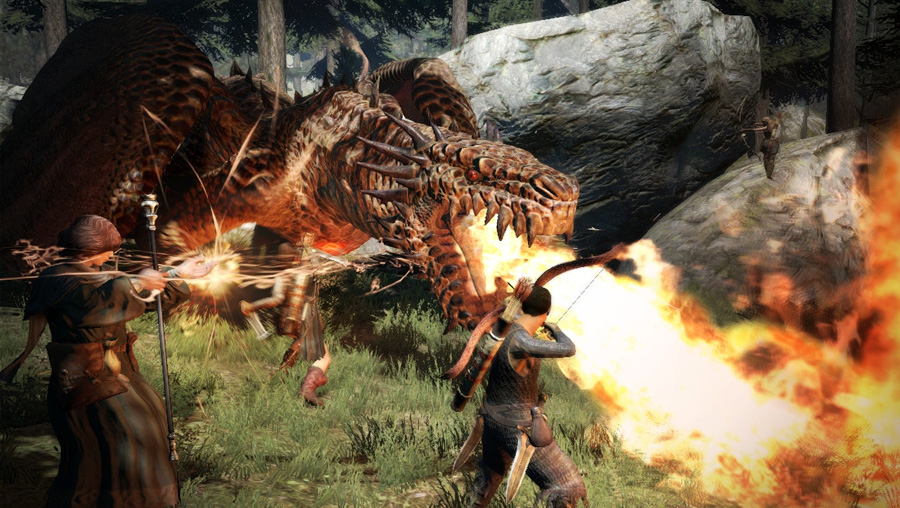
Dragon's Dogma could have been a fighting game
When Hideaki Itsuno was tasked with creating a new IP for Capcom, he eventually pitched what became Dragon's Dogma. But before it took shape as an action RPG, Itsuno had conceptualized games for a variety of genres, including a new fighting game (which he teased he would like to revisit in the future), a 3D action game similar to DMC, a traditional JRPG, a sandbox simulation game, and even an adventure title. Having looked at the success of games like Oblivion, Fallout 3, and Fable II in the west, he decided an open-world action RPG had the biggest global potential.
He was even able to include systems he had come up with years earlier. Itsuno said he came up with the idea for the Pawn system--which lets players create custom mercenaries that can be "borrowed" by other players as party members--in early 2000. The concept, he said, was based on his experience browsing Internet forums. He wanted to recapture the feeling of creating a post--or, in the case of Dragon's Dogma, a Pawn--which other players could respond and react to.

SimCity's data layer systems were originally designed to fix bugs
As a game whose players make decisions based on data and feedback, SimCity was planned from the beginning to have a bevy of data tools for players to use. But the ones we use in the game were originally designed as debug tools that allowed the developers to isolate certain processes to squash bugs prevalent in certain parts of the game's simulation. Pretty neat, eh?
These were especially useful in the early days, when Maxis was going to allow people to build their own buildings from the ground up. After building a power plant in SimCity, you can add modular upgrades to it, increasing its potential output and efficiency. But early on in the development process of the game, the devs built a prototype that would let players completely build a power plant (and other service buildings) from scratch, placing things like smokestacks, conveyor belts, transistors, and other components as they saw fit. While these created some buildings that looked... interesting, the simulation tech tried to simulate those buildings as they were built--meaning, unless you understand the engineering that goes into building a power plant, it'll utterly fail. Thus, the feature was scrapped.
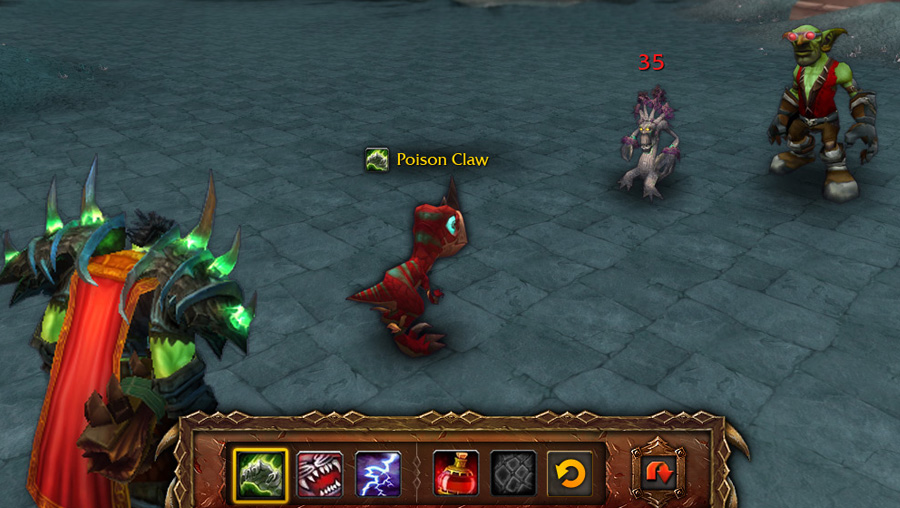
Theres a WoW Achievement that only one person has completed
One of the more interesting panels of GDC was a series of micro talks on how to properly use Achievements and Trophies in games. Representatives from games like Gears of War, Call of Duty, and BioShock Infinite all had something to say on the subject, and one of our favorite bits of trivia came from Cory Stockton of Blizzard. He detailed several interesting stats about WoW trivia, including which had the fewest owners.
Out of 13 billion achievements unlocked, only 69,000 players collected Insane in the Membrane by maxing out seven factions. And only 342 people ever got the Glory of the Panderia Raider meta-achievement for completing all the Mist of Panderia raid achievements. But theres an award more exclusive than that. According to Cory, Legendary Pet Brawler, the award for winning 5000 PvP pet battles, has only been completed by a single person. This individual clearly loves their pocket monsters.
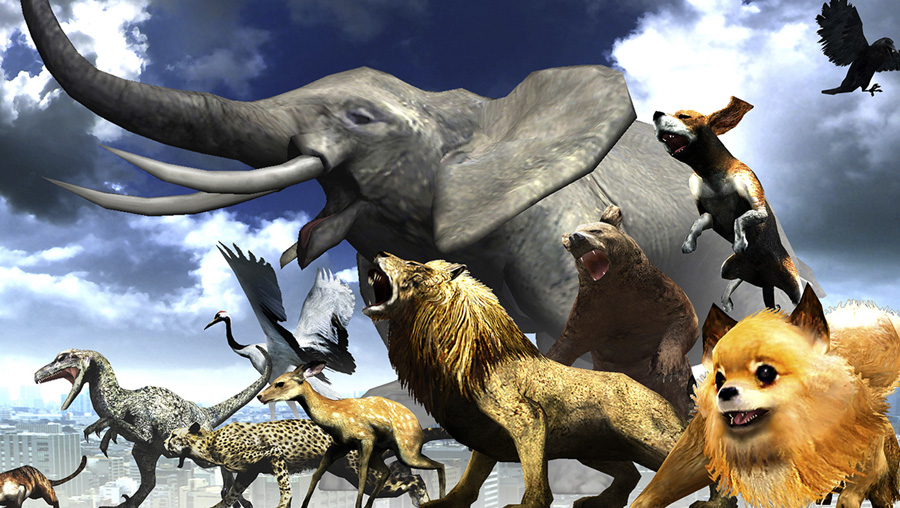
Tokyo Jungle barely made it to the US
It might not have been a massive seller, but Tokyo Jungle was one of the most unique games of 2012, so we were excited to attend a talk by the games director, Yohei Kataoka. He talked of how his team of outsiders united to create something special, the cramped work space they could barely afford, and how the devs made many of the most striking promotional materials themselves. But the most attention-grabbing story involved Sony of Americas disinterested in releasing Tokyo Jungle.
Approved for release in both Japan and Europe, Kataoka spoke of the US sides issues with it. Their problems included Tokyo Jungle being too niche, being set in Japan instead of somewhere more generic, and it starring animals instead of humans. The American branch felt it wouldnt sell and nearly chose to leave it unreleased until a last minute change of heart, though it was only sold on PSN. Kataoka then said the title went on to have strong sales worldwide, so hopefully Sonys US side will be more open to the next quirky project.
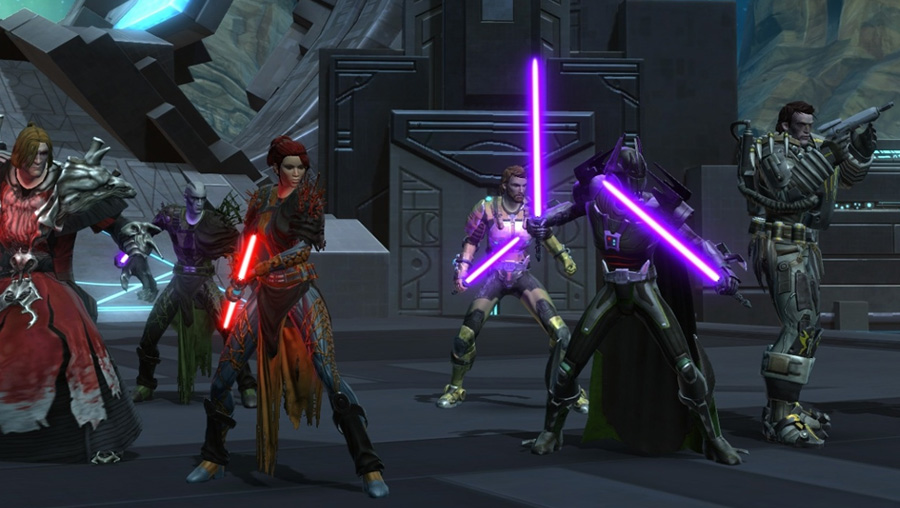
BioWare expected it would take 3-5 months for people to hit level cap in The Old Republic
BioWare Creative Director James Ohlen hosted a GDC panel on The Old Republic, going over the game's great successes and well-documented failures. One thing that was mentioned, though, proved that some of the problems came from poor planning, according to PC Gamer, who was at the panel.
The most worrisome was that people were going through the content a lot faster than we expected. We had expected our playerbase to play through the game and get to the endgame, on average, in about three to four months, maybe five months. It was 170-180 hours of content. But our metrics were showing us that, on average, for the millions of people playing our game, they were going through the game at a rate of 40 hours a week. So, in other words, BioWare thought the 180 hours of content between level one and 50 would take players months, ignoring that, in general, MMO players usually burn through a few dozen hours a week. Oops.
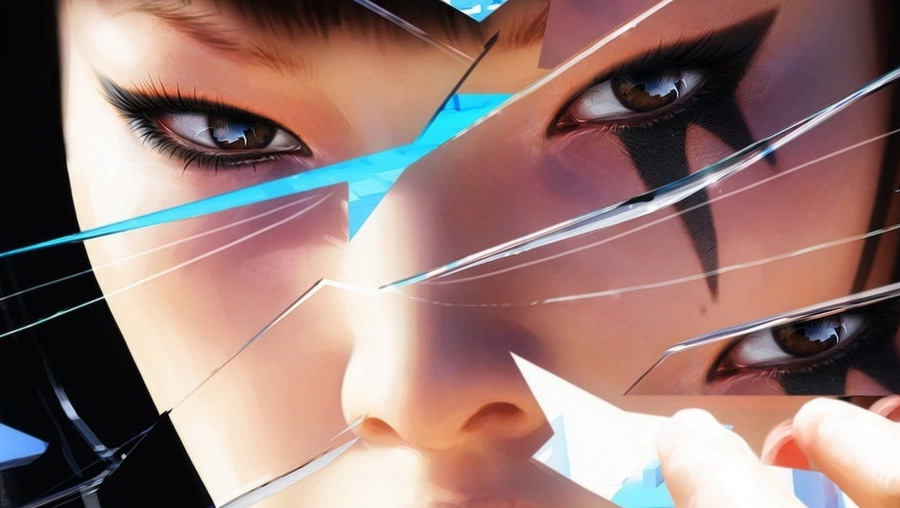
"Women are the new core"
Normally, when a person embarks on a Twitter rant, that person comes to deeply regret it. But not so for prolific game writer Tom Abernathy (Halo: Reach, The Saboteur), who in 2011 took to the social network to bemoan the fact that game makers are only serving "half our audience." How's that? Well, not sure if you've noticed, but nearly all games star white men, and since people tend to want to identify with the character they're playing, there's a big market out there being underserved.
In fact, as part of his GDC talk, Abernathy took it so far as to say it now makes better business sense to create a lead character that isn't a white man. Citing recent studies, he said adult women are now 30% of the game-playing audience in the US, as compared to the sub-18 male gamer population, which is just 18 percent.
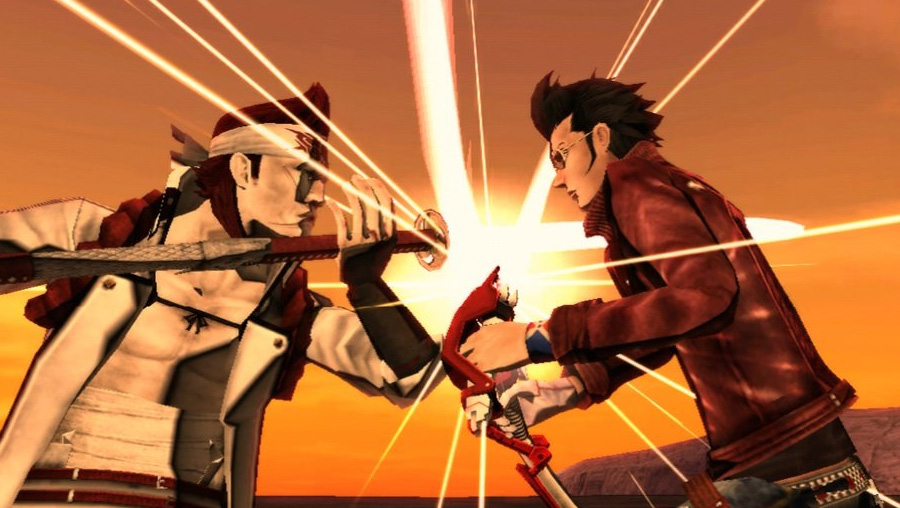
Suda51 wants to see his heroes fight each other
GDC afforded us a special chance to meet one our favorite developers, Grasshopper Manufactures Suda51 a.k.a. Suda Goichi. After giving us our first peek at his newest game Killer is Dead, we couldnt help but notice that this was yet another game that featured one of the most skilled assassins that ever lived, just like in previous games like Lollipop Chainsaw, Shadows of the Damned, and No More Heroes. With so many skilled fighters, you have to wonder whos the strongest, so we asked Suda and got a surprising answer.
We expected Suda to say that he couldnt pick favorites or just side with his newest creation, but instead he revealed hed love to see that fight himself. In fact, he fairly heavily implied that he wouldnt mind seeing a crossover title featuring his many creations. We believe Grasshopper owns the rights to all those characters, so could this be Sudas next title?
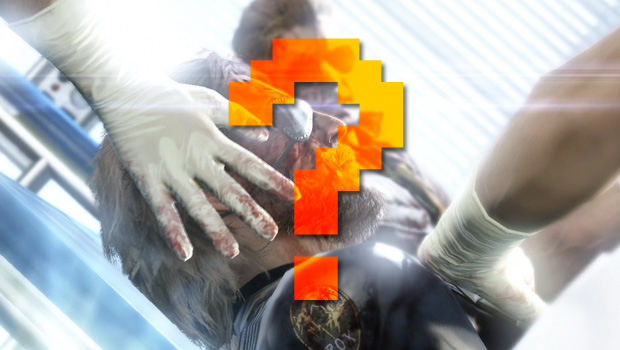
Lesson learnt
There's plenty more to talk about--and if you want us to, we can keep going. Want to know more about the interesting facts we overheard at GDC? Let us know in the comments below.
And if you're looking for more, check out the 8 best things we saw from GDC 2012 and 8 short games.
GamesRadar+ was first founded in 1999, and since then has been dedicated to delivering video game-related news, reviews, previews, features, and more. Since late 2014, the website has been the online home of Total Film, SFX, Edge, and PLAY magazines, with comics site Newsarama joining the fold in 2020. Our aim as the global GamesRadar Staff team is to take you closer to the games, movies, TV shows, and comics that you love. We want to upgrade your downtime, and help you make the most of your time, money, and skills. We always aim to entertain, inform, and inspire through our mix of content - which includes news, reviews, features, tips, buying guides, and videos.
